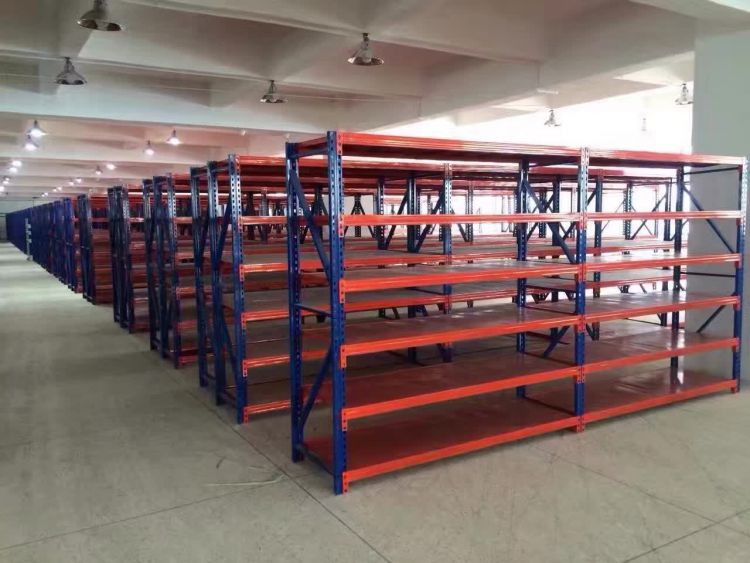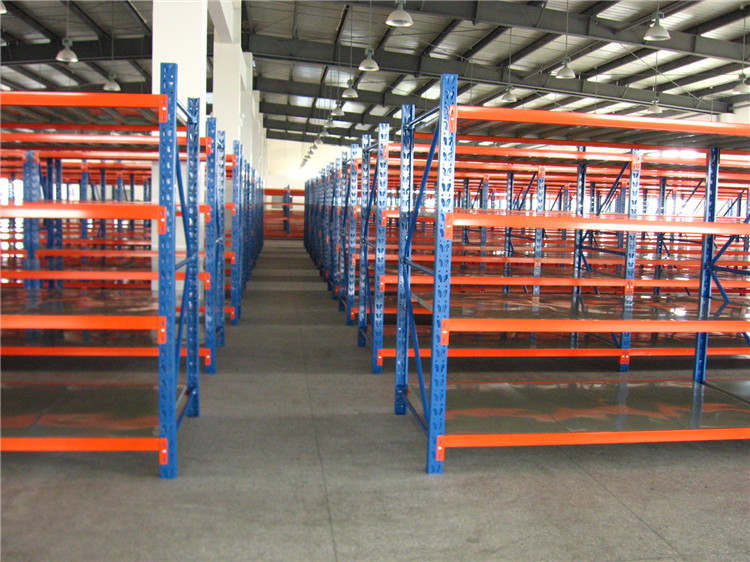In the relentless pursuit of warehouse optimization – maximizing storage, accelerating throughput, and minimizing costs – shuttle racking has emerged as a transformative technology. Moving beyond traditional static racking or even semi-dynamic systems, shuttle racking introduces a level of automation and density that revolutionizes pallet storage. This article delves deep into how shuttle racking functions, its core benefits, and why it might be the key to unlocking your warehouse's true potential.

Understanding the Shuttle Racking Concept
At its heart, shuttle racking is a high-density storage system where depth, rather than just width and height, is leveraged efficiently. It typically consists of multi-deep lanes of racking (often 5 to 20+ pallets deep) on each level. The critical innovation is the battery-powered, remote-controlled shuttle car. This device operates within the storage lanes themselves, travelling on rails laid on each level of the racking structure.
Unlike systems requiring forklifts to enter the racking (like drive-in), the forklift operator in a shuttle racking setup only interacts with the very front position of each lane. The shuttle takes over the task of transporting pallets deep into the lane or retrieving them to the front. This fundamental shift in operation unlocks significant advantages.
Core Components of a Shuttle Racking System
A fully functional shuttle racking system relies on several integrated components:
The Racking Structure: This is the robust steel framework designed with deep lanes on multiple levels. It features rails precisely installed on each tier for the shuttle to move along. The structure must be engineered to handle the combined weight of pallets, the shuttle, and dynamic forces.
The Shuttle Car: The star of the show. This battery-powered, radio-controlled device moves horizontally within the lane rails. It features lifting forks or rollers to raise, lower, and transport pallets. Sophisticated models include sensors for positioning, obstacle detection, and battery monitoring.
Charging Stations: Strategically placed charging points (often at the lane entrances or dedicated areas) ensure shuttle batteries remain operational. Some systems support fast charging during brief idle periods.
Remote Control Unit: Operators use dedicated handheld remotes to command the shuttle. These interfaces allow functions like moving the shuttle to a specific position, storing a pallet, retrieving a pallet, and checking battery status.
Warehouse Management System (WMS) Integration (Advanced): While basic operation uses remotes, optimal efficiency is achieved when the shuttle racking system is integrated with the warehouse WMS. The WMS directs which pallet to store or retrieve and optimizes lane usage and shuttle routing automatically.

How Shuttle Racking Operates: A Step-by-Step Workflow
The operational flow of a shuttle racking system illustrates its efficiency:
Pallet Arrival: A forklift brings a pallet to the entrance of a designated lane on the appropriate level.
Shuttle Deployment: The operator places the shuttle onto the lane rails at the front position using the forklift (if not already present). Alternatively, the WMS might dispatch an available shuttle.
Storing a Pallet:
The forklift places the pallet onto the shuttle's forks/rollers at the lane entrance.
Using the remote (or via WMS command), the operator instructs the shuttle to transport the pallet to the first available deep location within the lane.
The shuttle moves precisely along the rails, deposits the pallet, and returns to the front position, ready for the next command.
Retrieving a Pallet:
The operator requests a specific pallet (e.g., via remote input or WMS task).
The shuttle moves deep into the lane, locates the requested pallet (often using Last-In-First-Out - LIFO, or sometimes First-In-First-Out - FIFO with specific configurations), lifts it, and brings it back to the front of the lane.
The forklift operator picks up the pallet from the shuttle at the lane entrance.
Shuttle Management: Operators may need to move shuttles between levels or lanes using the forklift, depending on workflow demands. Advanced systems with multiple shuttles per level or automated vertical transfer (like lifts) minimize this.
The Compelling Advantages of Shuttle Racking
Implementing shuttle racking delivers tangible benefits that directly impact the bottom line:
Exceptional Storage Density: This is the primary driver. By utilizing depth effectively and minimizing aisle space (only narrow aisles for forklift access to the lane fronts are needed compared to wide VNA aisles), shuttle racking can increase storage capacity by 60-80% or more compared to selective racking in the same warehouse footprint. Buildings become far more productive.
Enhanced Operational Efficiency & Speed:
Forklift Productivity: Forklift operators spend significantly less time maneuvering deep into racks. Their role focuses on drop-off/pick-up at the lane front and horizontal transport, leading to faster cycle times (often 30-50% faster than drive-in) and less operator fatigue.
Parallel Operations: Multiple shuttles can operate simultaneously within different lanes on the same level, drastically increasing throughput, especially during peak periods. One forklift can service multiple lanes as shuttles work autonomously inside.
Improved Safety: Removing the need for forklifts to enter the racking structure significantly reduces the risk of rack collisions, product damage, and accidents. Operators work in clear, open aisles. The shuttle itself operates within the confined lane, minimizing interaction hazards.
Reduced Product Damage: Precise, automated movement by the shuttle minimizes the potential for pallet impacts or drops during storage and retrieval within the lane. Forklift handling is confined to stable positions at the lane entrance.
Better Inventory Control & Stock Rotation: While often operating on LIFO principles, shuttle racking systems integrated with a sophisticated WMS can implement complex rules (like batch management, expiry dates) to optimize stock rotation, even in deep lanes. The system precisely tracks pallet locations. FIFO operation is possible with specific lane configurations or multiple entry points.
Labor Optimization: The system allows existing labor to handle significantly higher volumes. While shuttles represent an investment, they reduce the need for additional forklifts and operators as storage density and throughput increase.
Implementing Shuttle Racking: Key Considerations
While powerful, shuttle racking isn't a universal solution. Successful implementation requires careful planning:
Product Suitability: Ideal for homogeneous SKUs with high volume and moderate to long-term storage. Perfect for beverages, packaged food, chemicals, building materials, and other uniform palletized goods. Less suited for highly diverse SKUs requiring immediate access to every pallet.
Throughput Requirements: While excellent for high-density storage, extremely high throughput environments (like pure cross-docking) might see less benefit compared to very narrow aisle (VNA) systems, though shuttle racking throughput is generally superior to drive-in.
Initial Investment: The cost includes the specialized racking, shuttle cars (multiple are often needed), charging stations, and potentially WMS integration. This is higher than traditional racking but offers a compelling ROI through space savings, efficiency gains, and reduced labor costs.
Warehouse Infrastructure: Requires a solid, level floor. Building height is a key factor in determining the number of levels and overall storage gain. Power for charging stations must be planned.
Operation & Training: Operators need training on using the remotes, shuttle deployment/retrieval with forklifts, and understanding the system's logic. Maintenance procedures for the shuttles are crucial.
Scalability: Systems can often be expanded by adding more lanes, levels, or shuttles as business grows.
Shuttle Racking vs. Alternatives: Where it Shines
Understanding where shuttle racking fits compared to other systems clarifies its value:
vs. Selective Pallet Racking: Shuttle racking offers vastly superior density (>60%+ increase) but slower direct access to every single pallet. Selective wins for fast-moving, diverse SKUs needing immediate access.
vs. Drive-In/Drive-Thru Racking: Both offer high density. Shuttle racking significantly outperforms drive-in on throughput speed (due to parallel shuttle operations and faster forklift cycles), safety (no forklift entry), and reduced product damage. Drive-in may have a lower initial racking cost but higher long-term operating costs and risks. FIFO is easier with drive-thru than basic shuttle LIFO.
vs. Mobile Pallet Racking: Mobile racking offers high density and full selectivity but requires moving entire rack sections, which is slower and less efficient for frequent access than shuttle racking operations. Mobile racking typically has a higher racking cost per pallet position.
vs. Automated Storage/Retrieval Systems (AS/RS): Shuttle racking is often termed "semi-automated." It offers higher density and faster throughput than manual systems at a significantly lower cost than fully automated cranes and miniload systems. AS/RS provides the highest level of automation and integration but with a much higher capital investment.
Applications and Industries Benefiting from Shuttle Racking
Shuttle racking finds strong adoption in sectors prioritizing high-density storage of consistent pallet loads:
Food & Beverage: Storing large quantities of packaged goods, drinks (water, soda, beer), and ingredients. Excellent for buffer storage before production or seasonal peaks.
Chemicals & Pharmaceuticals: Safe, dense storage for raw materials and finished products in drums or uniform pallets. Supports batch control.
Building Materials & DIY: Ideal for tiles, fixtures, paint, insulation, and other bulky, uniform products requiring significant warehouse space.
Manufacturing: Storing raw materials (plastics, metals) and finished goods in large volumes. Acts as buffer storage in production logistics.
Third-Party Logistics (3PL): Maximizes valuable warehouse space for clients storing large quantities of specific SKUs, improving the 3PL's value proposition.
Cold Storage: Particularly valuable due to the high cost of refrigerated and frozen space. Shuttle racking's density dramatically reduces the required cubic footage, leading to massive energy savings. Reduced forklift activity also lowers heat generation.
The Future of Shuttle Racking: Towards Greater Automation
Shuttle racking technology continues to evolve:
Increased Intelligence: Shuttles with more sophisticated sensors, onboard computing, and better communication protocols for enhanced diagnostics, predictive maintenance, and optimization.
Tighter WMS/Control System Integration: Seamless real-time communication between the WMS and shuttle fleet for fully automated task assignment, dynamic routing, and inventory accuracy.
Automated Vertical Transfer: Integration with lifts or elevators that automatically move shuttles between different levels without forklift intervention, creating a more continuous automated flow (often called "Cube" storage).
Multi-Level Shuttles: Development of shuttles capable of moving vertically within a bay to access multiple levels independently, further increasing automation levels.
Enhanced Data Analytics: Leveraging operational data from the shuttle system to optimize lane utilization, predict demand patterns, and improve overall warehouse planning.
Shuttle racking represents a powerful middle ground between fully manual racking and high-cost, fully automated AS/RS. Its core strength lies in delivering exceptional storage density and significantly improved operational efficiency and safety, particularly for operations handling large volumes of homogeneous palletized goods. The reduction in required aisle space translates directly into substantial cost savings on warehouse space or allows for massive inventory growth within an existing footprint.
While the initial investment is higher than basic selective racking, the rapid return on investment through space savings, labor optimization, increased throughput, and reduced product damage makes shuttle racking a compelling strategic choice for warehouses battling space constraints and seeking operational excellence. If your operation involves deep storage of consistent SKUs and you need to do more within your existing four walls, shuttle racking deserves serious consideration as a transformative logistics solution. By automating movement within the dense storage lanes, the shuttle unlocks the true potential of your warehouse cube.







